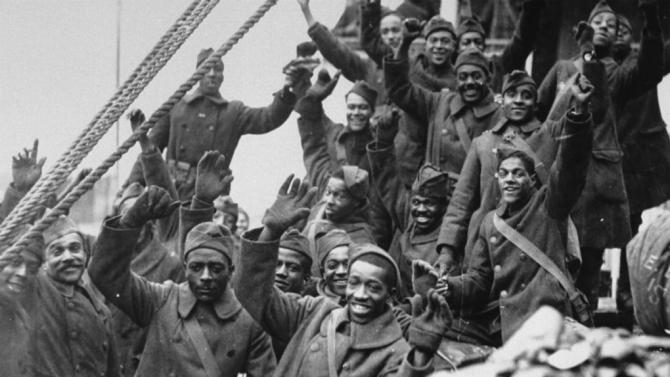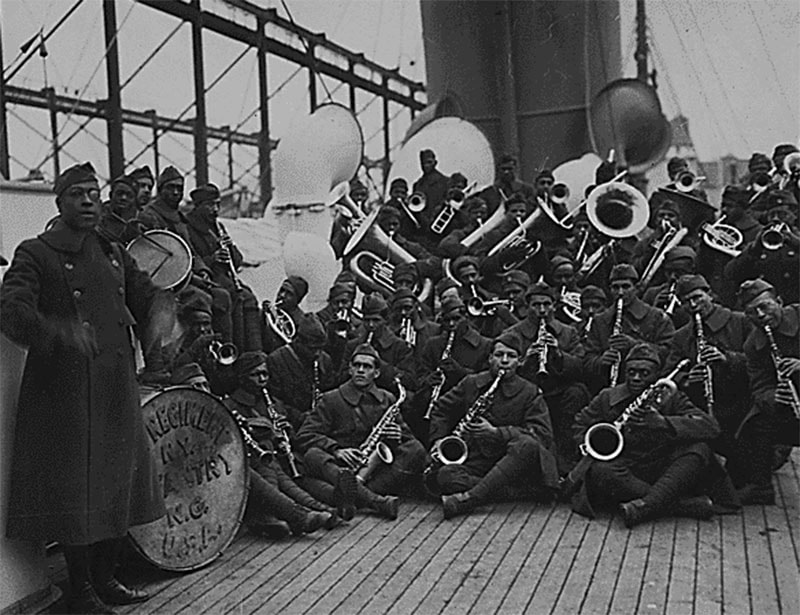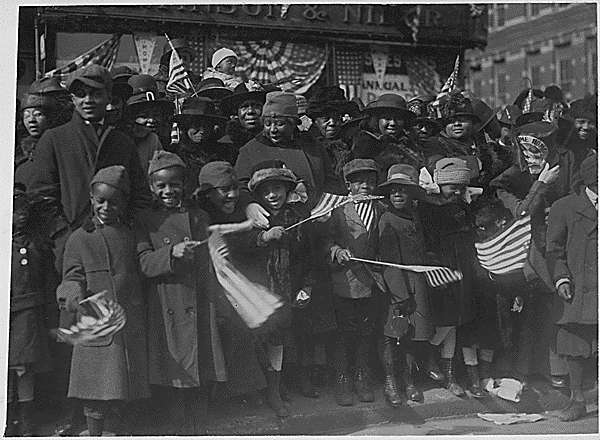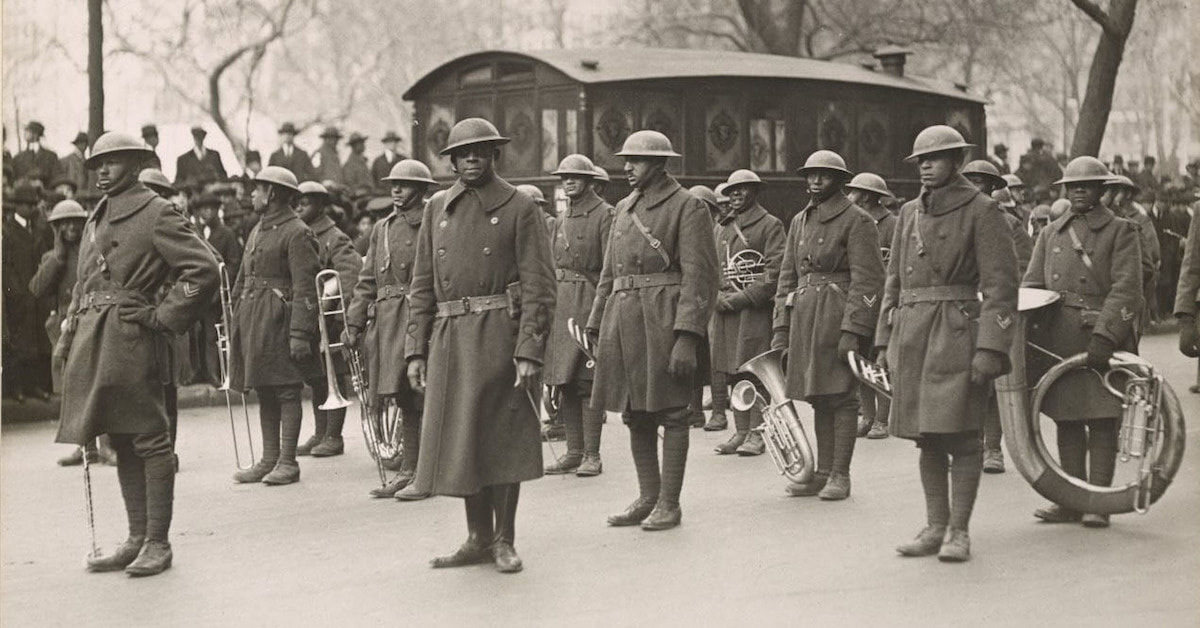Fighting in europe
|
The war most directly impacted those African Americans called to fight and labor in the military overseas. Over 200,000 crossed the Atlantic and served in France. The majority worked in service units, broadly characterized as the Service of Supply (SOS). They dug ditches, cleaned latrines, transported supplies, cleared debris, and buried rotting corpses. The largest number of African-American SOS troops served as stevedores, working on the docks of Brest, St. Nazaire, Bordeaux, and other French port cities to load and unload crucial supplies. "I don't want to stagger under heavy boxes," one stevedore declared. "I want a gun on my shoulder and the opportunity to go to the front." It was hard work, made worse by racial discrimination, but nevertheless essential to the success of the war effort.
The two black combat divisions, the 92nd and 93rd, made up of approximately 40,000 troops, did see battle. Unsure how to use black national guardsmen, the American army "loaned" the 93rd Division to the French army. It was the only American division to serve exclusively under French command. Despite having to acclimate to French methods of combat, the division's four regiments performed exceptionally well and received numerous commendations.
The 93rd Division's 369th Infantry Regiment from New York became the most famous fighting unit of African-American troops. Nicknamed the "Harlem Hellfighters," the regiment first garnered notoriety for its world-class band, led by the acclaimed James Reese Europe and made up of top musicians from the United States and Puerto Rico. Europe's band, along with other black regimental ensembles, popularized jazz to a war-torn French nation fascinated with black culture. The 369th received equal acclaim for its combat performance. Two soldiers of the 369th, Henry Johnson and Needham Roberts, were the first American soldiers to receive the French Croix de Guerre (War Cross). The regiment served for 191 days and ceded no ground to German forces. They were the first American regiment to reach the Rhine River in Germany following the armistice and returned to the United States national heroes.
The 92nd Division, in comparison to the 93rd, had a much more harrowing experience. White army officials characterized black soldiers of the division as rapists and spread vicious lies among French civilians. African-American officers were particularly singled out for racist treatment because of their status. Viewed as a threat to white authority, many were unjustly transferred out of the division and others were court-martialed on bogus charges. |
Despite inadequate training and racial discrimination, the division as a whole fought well. However, one regiment, the 368th Infantry Regiment, performed poorly during the Allied Meuse-Argonne offensive in September 1918 and was used by the military to characterize all black soldiers and officers as complete failures. African-American soldiers would contest these slanderous charges well into the postwar period.
The rigors of combat and labor challenged black soldiers' physical and emotional stamina. Nevertheless, service in France constituted a remarkable experience. African-American troops often interacted with North and West African soldiers serving in the French military, expanding their sense of diasporic belonging. Black soldiers received a warm welcome from French civilians, who, unlike white troops of the American army, exhibited little overt racism. "They treated us with respect," one soldier recalled, "not like the white American soldiers." These interactions further contributed to the image of France as a nation free of racial discrimination and uniquely committed to universal democratic rights. Travel and service in France expanded the boundaries of how black soldiers viewed the world and their place in it. Lemuel Moody, a soldier who served overseas, reflected that his experience was "altogether improving and broadening.…[It] changed my out look on life. I see things now with different eyes."




